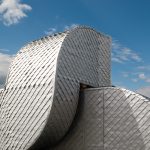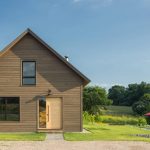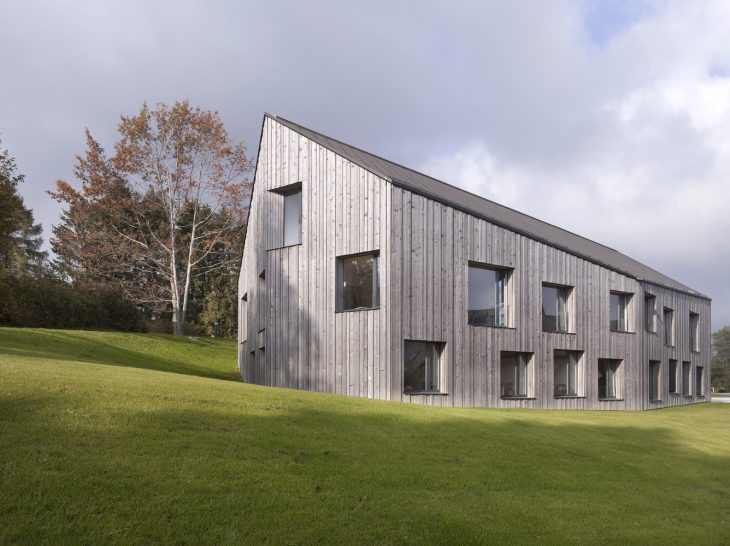
Boegli Kramp Architekten designed the La Branche Home for the Disabled Healthcare complex in Switzerland in 2010. Take a look at the complete story below.
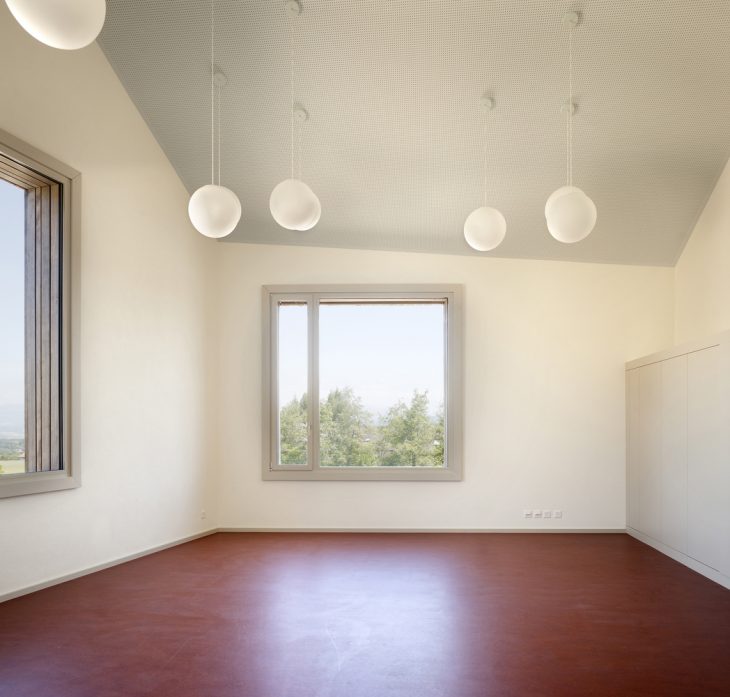
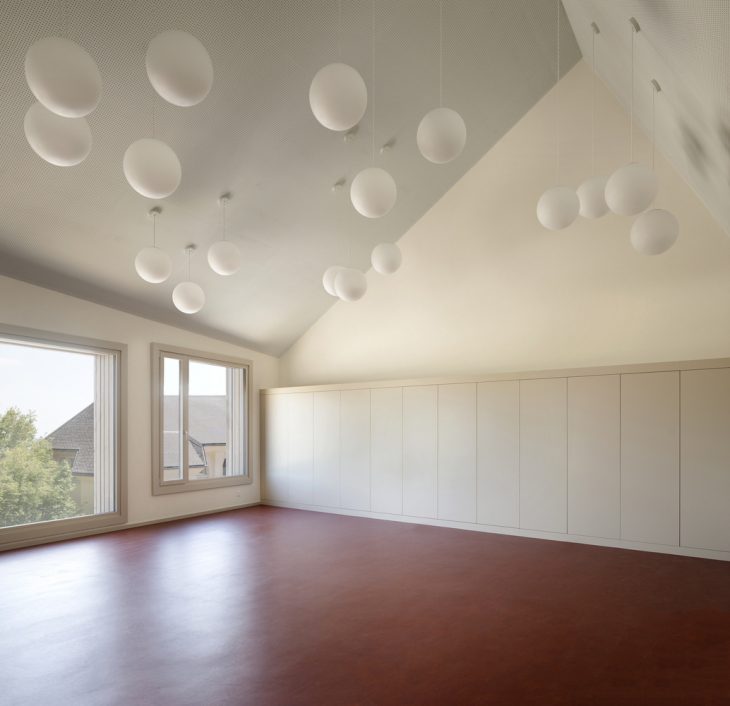
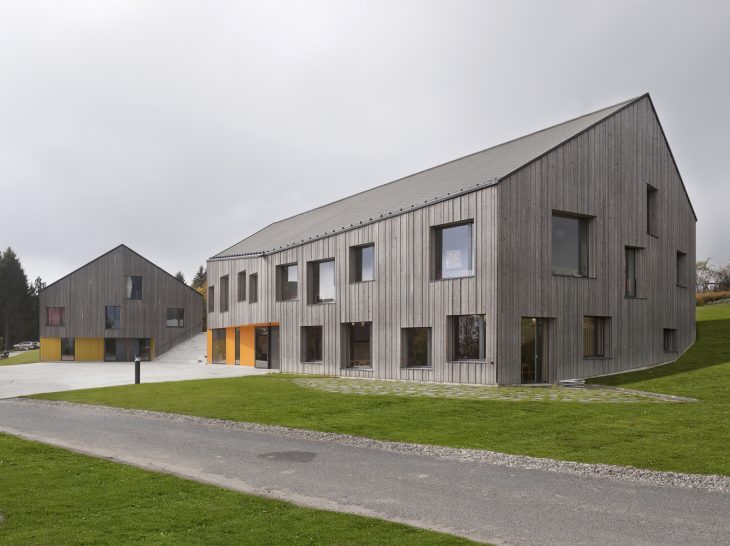
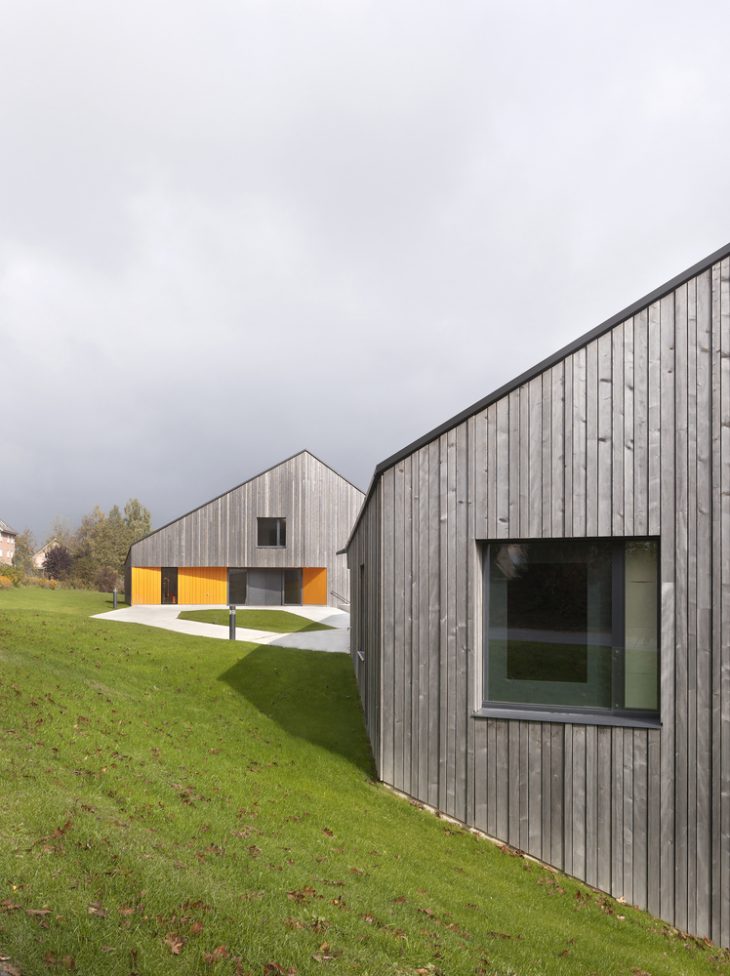
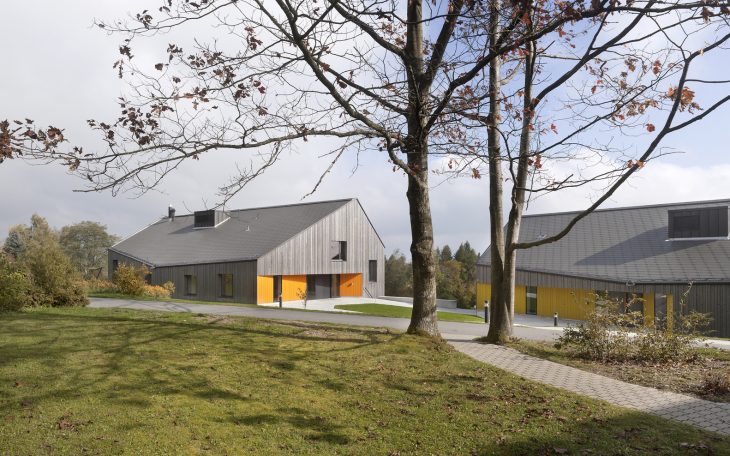
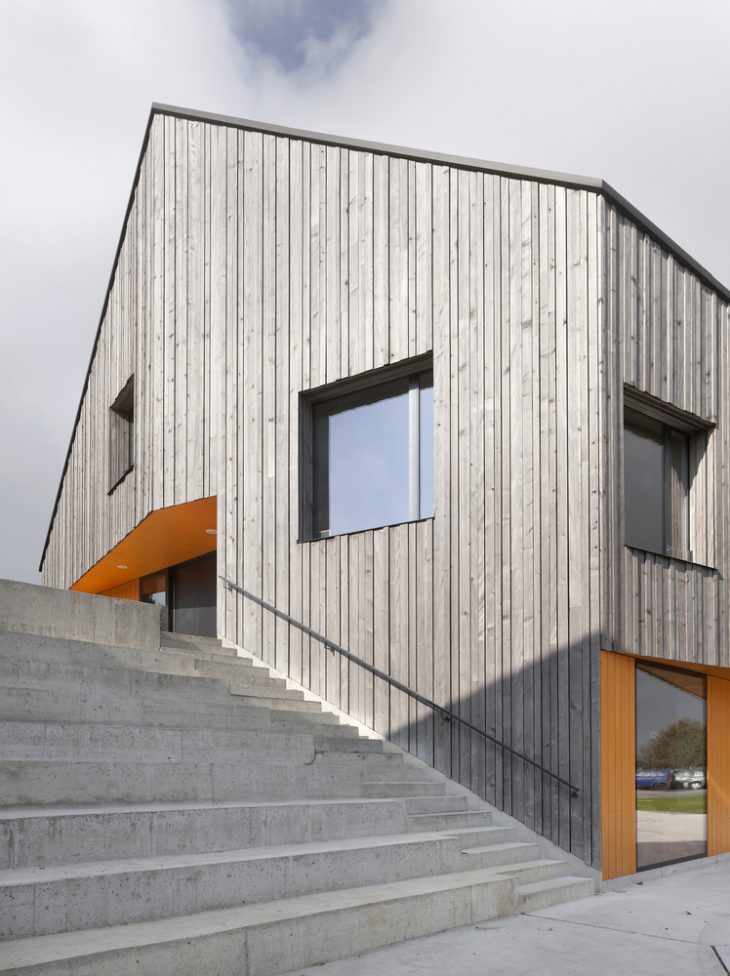
The different buildings of the La Branche home for the disabled create a small village in its own right, situated in a rural location with a view of the Alps. The facility on a gently sloping south-facing terrain was to be completed by polyvalent buildings placed in a way to form the village center.
Two new buildings define a central square situation on three levels. Together with the nearby buildings of the hall and the school, it creates a meeting place, a village square representing the heart of the location. The stairs are also an outdoor amphitheater and can be used for performances. To encourage contact and exchange, the existing street was removed and diverted around the village center. Access to the square is exclusive via small footpaths that interweave with the existing network of walkways.
To retain the rural topographical character, the natural, gently sloping terrain was hardly changed. The building volumes are inserted into the green areas as free-standing structures. They are derived from Anthroposophic teachings and appear in a translated, polygonal, crystalline form.
To break direct translation, the volumes were however clad in vertically structured wooden boards. The appearance is invigorated through the seemingly arbitrary use of differently dimensioned, yet always formally congruent windows.
The situation on the slope allows floor-level access to all stories. The lower ground floors, which have a direct relationship with the large square, unite the public functions of the store, restaurant, and administration. The upper ground floor accommodates therapy rooms, studios and the therapeutic bakery, which can all be accessed independently of the upper level.
The two buildings are structured in the organizational areas of production, sales, administration, therapy, and nursing. The functional division is both horizontal through the independent buildings and vertical due to the different functions. The simple organization of the buildings takes the orientation and coordination difficulties experienced by the users into account.
Vertical access is closely connected to the relevant entrances and almost exclusively serves as shortcuts for the outdoor paths. Central, slightly bossed corridors with natural light from both ends connect the individual rooms on each floor.
Photography by Alexander Gempeler


